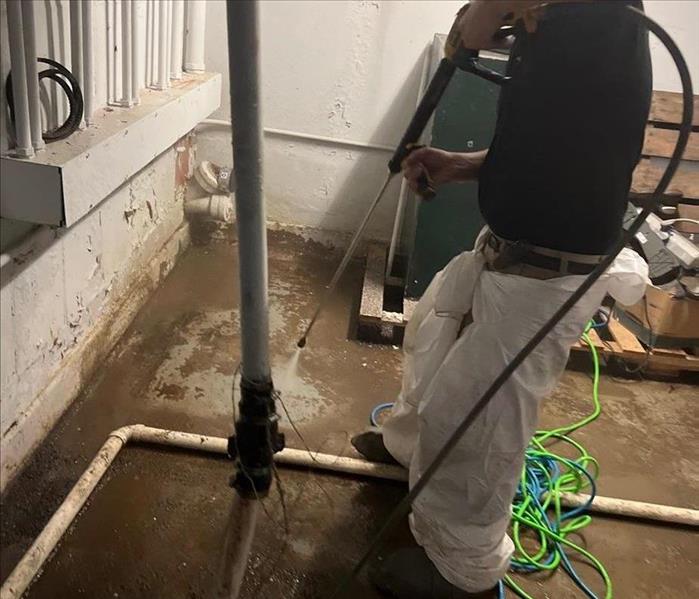Mold in Insulation: What to Do When It's Hidden
11/13/2024 (Permalink)
Mold growth is one of the most common problems homeowners face, and when it forms in insulation, it often goes undetected until the damage is severe. Insulation, especially in areas like attics, crawl spaces, and basements, is particularly susceptible to moisture, creating the perfect environment for mold to thrive. But what should you do when mold is hidden in your insulation, and how can you address it effectively? Here’s a guide to help you tackle this issue.
How Does Mold Get into Insulation?
Mold forms in insulation when moisture seeps in and combines with organic materials like dust or dirt, providing a food source for mold spores. Poor ventilation, roof leaks, and high humidity are common contributors. Fiberglass insulation, while not organic, can still harbor mold if enough moisture is present, especially when it traps dust or debris.
A surprising statistic is that approximately 70% of homes have some form of mold, much of it hidden from view. Insulation often provides the perfect hiding place for this unwelcome guest, making it crucial to take action when it’s discovered.
Signs of Mold in Insulation
Even though mold in insulation can be difficult to spot, there are telltale signs to watch for:
- A persistent musty odor in your home
- Water stains or discoloration on walls or ceilings
- Damp or wet insulation after heavy rains
- Visible mold growth in exposed areas
What to Do When Mold Is Hidden in Insulation
If you suspect mold in your insulation, here are some key steps you should take:
- Inspect the Area: Begin by inspecting areas prone to moisture, such as the attic, basement, or crawl space. Pay attention to any discoloration or musty smells.
- Address the Source of Moisture: Mold won’t grow without moisture, so it’s essential to fix leaks, improve ventilation, or reduce humidity levels.
- Remove and Replace the Affected Insulation: Moldy insulation must be removed carefully to prevent spores from spreading. It’s best to call professionals, as improper removal can worsen the situation.
- Thoroughly Clean the Area: After removing the insulation, clean the surrounding surfaces with appropriate mold removal products to prevent regrowth.
- Install New, Mold-Resistant Insulation: Consider replacing the old insulation with mold-resistant materials, such as foam board or treated fiberglass, to reduce the risk of future mold growth.
Why Call SERVPRO of South Philadelphia?
Mold removal, especially in insulation, requires expert handling. At SERVPRO of South Philadelphia, we have the expertise, equipment, and experience to safely remove and restore mold-infested areas. Whether it’s your attic or basement, we ensure that the mold is gone for good and that your insulation is replaced with the right materials.
If you suspect mold in your insulation, don’t hesitate to reach out. Properly addressing mold growth early can prevent costly damage to your home.






 24/7 Emergency Service
24/7 Emergency Service
